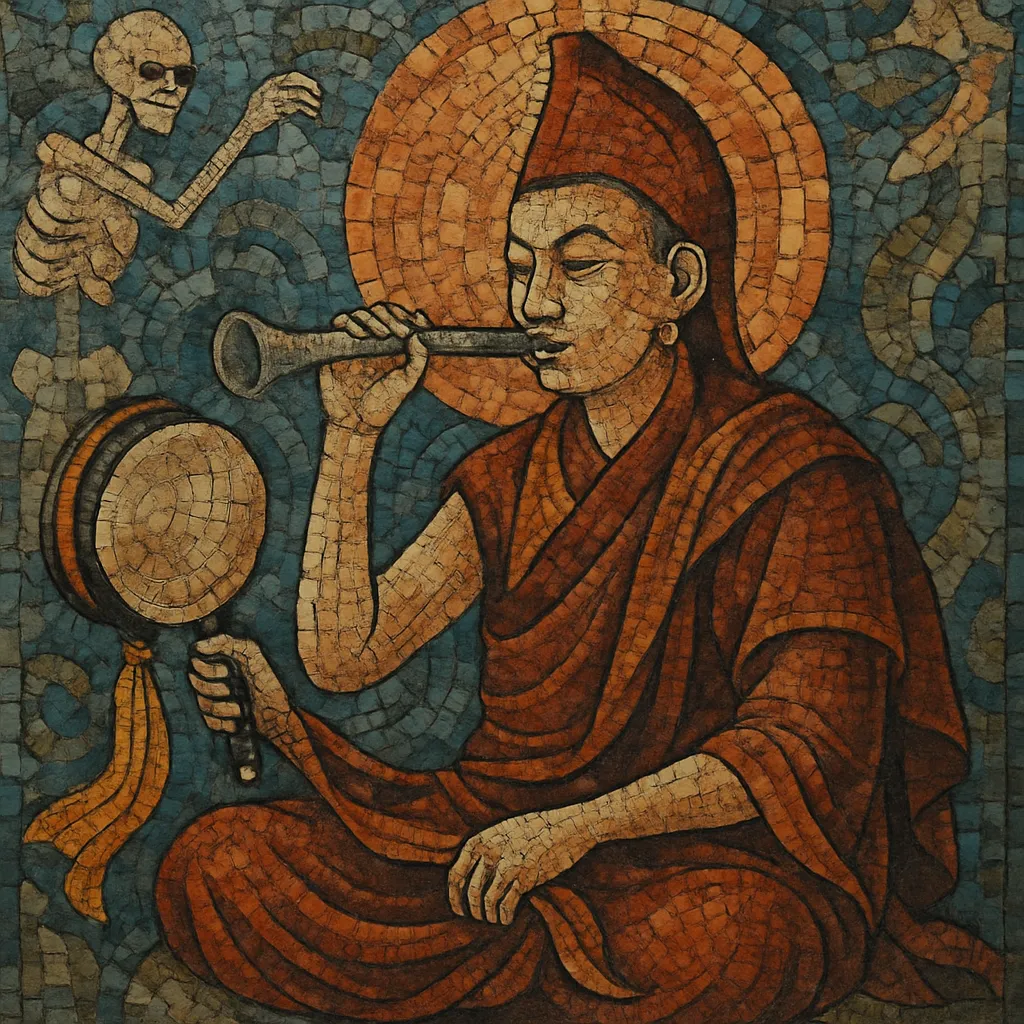Chöd (Tibetan: gcod, “to cut”) is a Tibetan Buddhist ritual-music tradition whose chants, drum rhythms, and piercing trumpet calls accompany a tantric meditation aimed at cutting through ego-clinging.
It is performed with a small two-headed hand drum (damaru), a ritual bell (drilbu), and the kangling (a high, reedy trumpet traditionally made from a thighbone), with vocal recitation moving between free-rhythm chant and formulaic melodic recitative.
Its soundworld is stark and vivid: free-tempo vocal lines, sudden shouted interjections like “PHAT!”, cyclical drum patterns, rattling pellets on the damaru, and sustained kangling blasts that demarcate sections and summon deities and protectors.
The music is inseparable from the sādhanā text and visualization sequence—invocation, offering, self-sacrifice as compassionate ‘feast,’ and dissolution—often practiced at liminal sites such as charnel grounds to cultivate fearlessness and compassion.
Chöd is attributed to the Tibetan yogini Machig Labdrön (c. 1055–1149), who synthesized Indian Prajñāpāramitā teachings and tantric methods into a uniquely Tibetan practice. From its inception in the 1100s, the ritual included codified musical cues—chant tones, hand-drum patterns, bell strokes, and the use of the kangling—to pace the visualization and mark transitions.
Across the Nyingma, Kagyu, Sakya, and later Gelug schools, Chöd developed distinct liturgical melodies and instrument patterns tied to specific textual transmissions. Masters compiled chant-books with neumatic or mnemonic indications for contour, accent, and instrument entries. While largely non-metric, certain sections adopted repeating rhythmic cells on damaru and recurring melodic cadences that functioned as audible “signposts” in the sādhanā.
From central Tibet, Chöd spread to Himalayan regions (Bhutan, Nepal, Ladakh) and Mongolia. Wandering practitioners (chödpa/chödma) performed at cemeteries, mountain passes, and temples, maintaining a sound aesthetic meant to confront fear and invite deities. Monastic communities also preserved more formal, choir-like renditions of the chant with coordinated percussion and occasional long-horn or conch support in large rituals.
After the mid-20th-century Tibetan diaspora, Chöd practice and its music reached global audiences. Recordings by Tibetan masters and monastic ensembles introduced the characteristic drum-and-kangling texture and chant style to listeners outside Asia. Ethnomusicological work documented local variants and performance practice, while contemporary teachers continued to transmit lineage-specific melodies.
Today, Chöd remains a living ritual art within Tibetan Buddhism. Its distinctive sonorities—free-rhythm chant, hand-drum ostinati, ritual bell articulation, and penetrating trumpet timbres—have also inspired elements in world-fusion, ritual ambient, and drone-oriented experimental music, though for practitioners its musical form remains fundamentally devotional and soteriological.
Treat composition as liturgical design: music must serve the sādhanā’s phases—invocation, offerings, cutting through, feast, and dissolution. The aim is to pace visualization and transform fear through sound.


